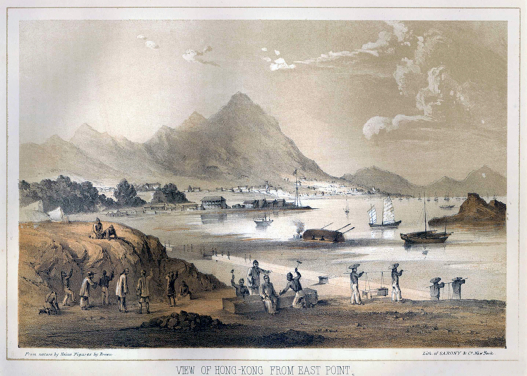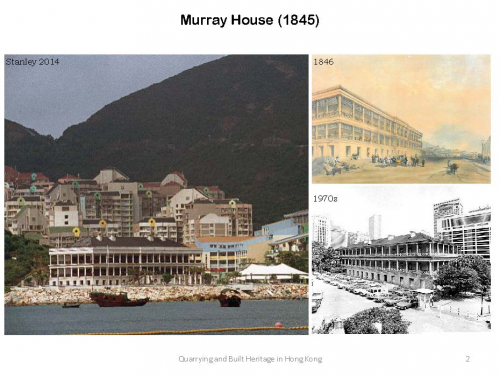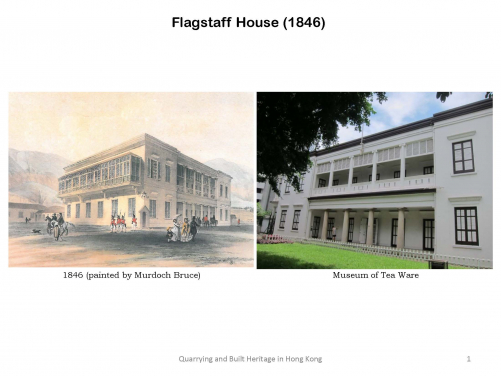Facing the problem of severe housing shortage, the Hong Kong government once again puts forth land reclamation as an option to increase land availability for housing development. Currently, over 90% of the fill materials used for reclamation are imported. Yet, back in the old days, raw materials ranging from gravels for land reclamation to essential raw construction materials were all supplied by local quarries.
Since the 19th century when the British government first exercised its rule on the territory, quarrying had become a major pillar of the city’s economic development.
Once situated in an active volcanic zone, Hong Kong has a rich deposit of granite rocks, which are of the finest quality and provided valuable material for a number of beautiful early buildings including Murray House and Flagstaff House (now the Museum of Tea Ware). Stones from quarries were not only used to meet local demand but were also exported for construction in the neighbouring Guangdong and overseas as far as San Francisco in the 1850s.
Against this backdrop, Dr Poon Sun Wah’s team of the Department of Real Estate and Construction of the University of Hong Kong presents research findings on “History and Heritage of Quarrying in Hong Kong”, which is the fullest record to date on the city’s quarrying history with a rich collection of historical photos, government documents on operation of quarries at different periods and stories of Chinese quarry workers.
Dr Poon’s team has conducted many years of research into the construction history of lighthouses in the region and Tai Tam Tuk Reservoir, the construction of which were made possible largely due to Hong Kong’s quarrying industry.
Today, the only remaining quarry in Hong Kong is Lam Tei Quarry, meeting less than 10% of local demand. The government is planning to identify new quarry sites to satisfy local demand. In particular, the government once again puts forth land reclamation as an option to increase land availability for housing development. The team’s work on quarrying will provide insights into the conservation and development of old and future quarry sites.
Dr Poon will introduce to the media the team's findings at a press conference on July 31 (Tuesday). Details are as follows:
Date: July 31, 2018 (Tuesday)
Time: 11 am
Venue: Room LG104, LG/F, K.K. Leung Building, the University of Hong Kong
For media enquiries, please contact Ms Melanie Wan, Communications and Public Affairs Office, tel: 2859 2600/ email: melwkwan@hku.hk.



